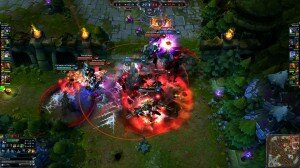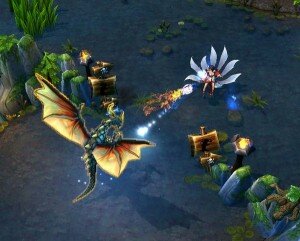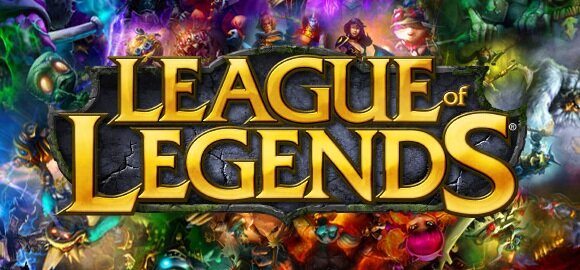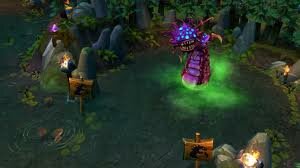Now that we’ve covered all the basics and mundane parts we can start the fun stuff. What really makes League of Legends such a competitive game and hugely popular in the e-sports community.
You’ll know the laning phase has finished when one of the teams starts to group and take objectives (turrets or the dragon). If you are still in lane this is your indication to leave it and group up with your team. Your place in the team will vary depending on your roll, if you are the tank you want to be in front (obviously), the mages and ADC in the back (obviously) while the support will vary on the champion. Some supports excel at engaging the enemy team (such as Leona), meaning these champions will be in the center of the fight whereas some supports have a lot of CC to protect the back line (such as Thresh). Team fights are exactly what the name implies, your entire team versus their entire team. To win a team fight it is crucial to focus the right target. Depending on the opposition’s team composition and who is doing the most damage it may be essential to focus down the ADC first, or maybe the mage first. For ADCs always attack the closest target to you, even if that happens to be the enemy tank (which it probably will be), a common mistake made by many newcomers is they try to attack the enemy back line, in doing so they get killed easily by the opposing front line and thus have no impact on the fight.
The tank’s main role is to get in the enemy back line’s face and stay there, simple as that. The more trouble you cause them, the less they can cause on your team. Depending on the support you’ve chosen you may have to stay in the back line and protect your squishy teammates or engage the enemies. If you’re an assassin you have only one job: get to the enemy back line and wreck their carries. Assassins usually have good gap closers or stealth moves to accomplish this, allowing them to get by the big tanks without being seen or touched. The mage’s job is simple, provide overall AOE (area of effect) damage and CC (crowd control). This all happens very fast meaning one bad decision make or brake a team fight.

This glorious mess is a team fight.
Let’s move to objectives, specifically the dragon. The dragon is a neutral monster located in the bottom portion of the river. At early stages it will be too much for one or even two people and will require a fair amount of resources to take down. Fret not, it is more than worth it. Slaying the dragon will give your entire team a large amount of gold depending on when it was slain. In addition, the dragon will grant XP (experience points) to the group of players who killed it. The gold given by the dragon varies on the average level of the team, the higher the level your team is the more gold you are given. Lastly, the dragon will grant bonus XP to a team if their average level is lower than the opposition’s, making it a valuable objective for comebacks. The second neutral monster is called Baron Nashor, essentially a large purple worm with several mouths. Located in the upper river area it is hands down the most valuable objective late game. The Baron is extremely powerful and will often require the whole team to take down. It is more than worth it though as killing it will grant plenty of XP and gold for the team. The real reason for slaying Baron is for the almighty buff, massive bonus attack damage and ability power as well as increased health and mana regeneration.

It would not be wise to fight the drake alone.
Now that we know what team fights are and where they usually occur let’s learn when and how to incorporate them together into strategy. Let’s paint a picture, if you see their top laner pushing top and four of them in the mid lane while you have your whole team mid what do you do? The answer is obvious, engage on the four members in mid with your five and push for a turret or a dragon. Although this may seem simple it often doesn’t work out that way in game. A simple minded player would think “This guy is all alone top, let’s all go up there and kill him!”. You’d be surprised how often this happens. Assuming you got the kill, it would still be the bad call because your team would only get one kill as oppose to four, your whole team would be top and less likely to take and objective and since you showed your teams position you gave the opposing four members to push or take another objective. Although it can sound complicated it all boils down to taking advantages, applying pressure and taking objectives. Another example, if the enemy team has all 5 people pushing top and you have 5 mid what do you do? You could try to go top and save that tower but is it really worth it? With their 5 people that turret will drop very quickly and you’ll have wasted time rotating up there. The logical decision would be to take dragon because it is actually worth more gold than a turret.
Although it may sound complicated and daunting remember that it’s just a game, the same way that chess is just a game with many intricate strategies and plays. League of Legends has a very steep learning curve, but that makes it all the more rewarding when you make a beautiful play. On the surface it may look like a simple game of five versus five, but beneath that surface is a grueling game of complicated strategies, team play and intense blueprint coordination, resulting in an inexplicable sense of achievement and enjoyment.


